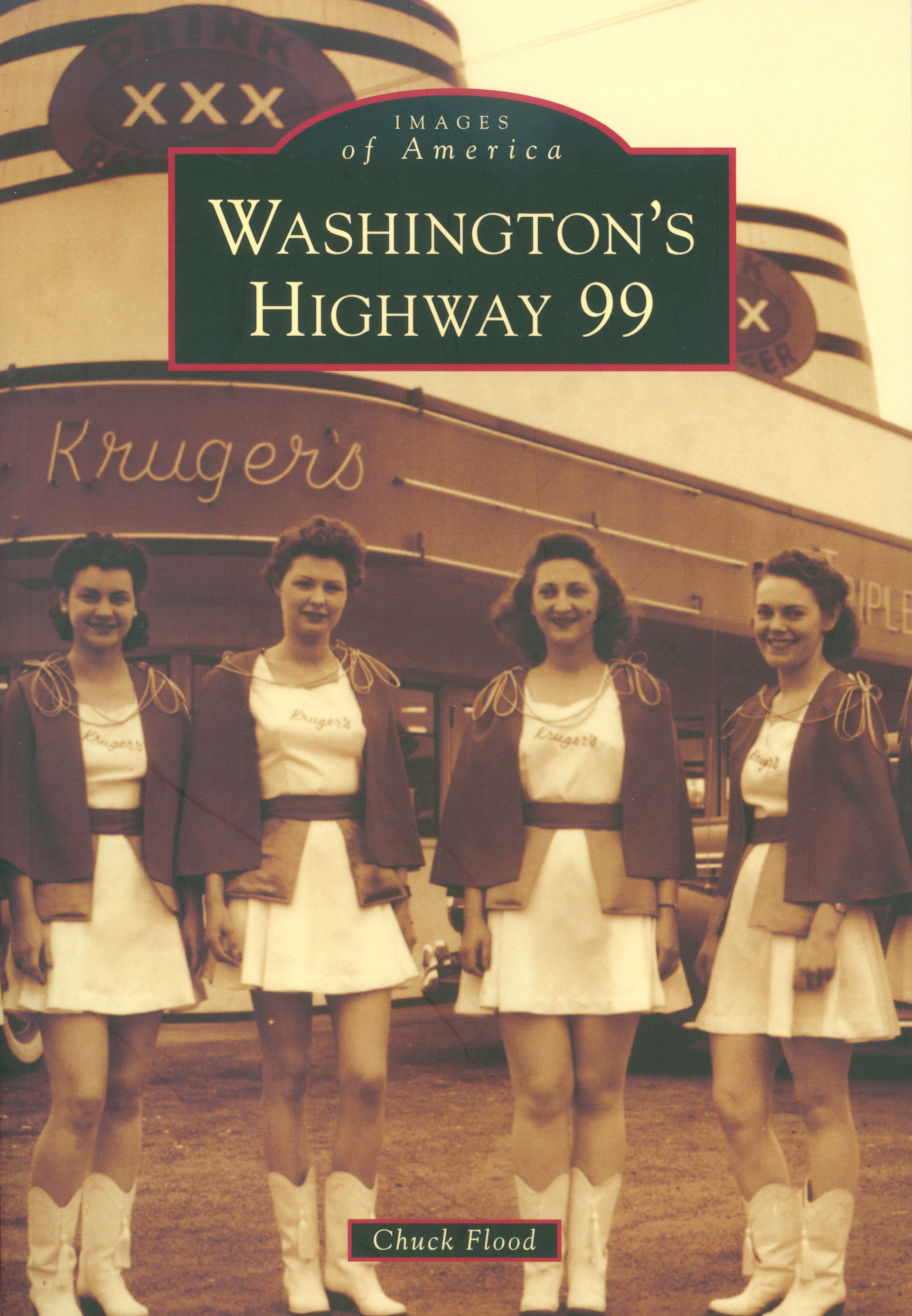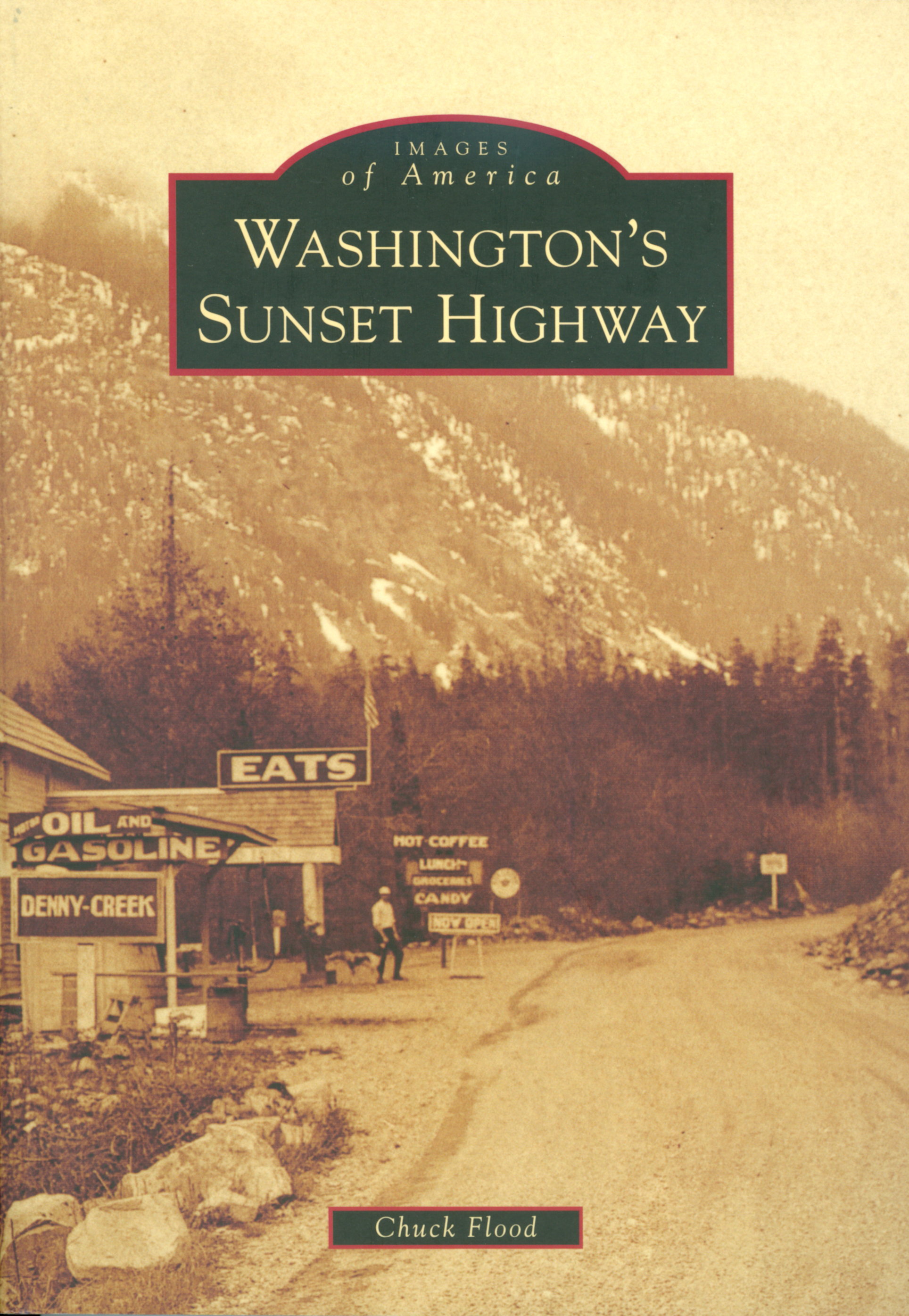
|
For a century Highway 99 has been the main transportation corridor in Western Washington. Forest and farm products, fish and families have all been part of the flow of business and recreational travel between the Canadian border at Blaine and the Columbia River at Vancouver. What is now Highway 99 originated as a loose network of muddy roads connecting early settlements. With the dawn of the Automobile Age and construction of good roads, travel for business and pleasure began to shift away from ships and railroads to trucks and family cars. Roadside services developed within and between towns to cater to the new type of travelers - as many as 1,300 "gas, food and lodging" businesses lined Highway 99, ranging from primitive auto camps to luxury hotels; from simple burger stands to roadside eateries shaped like giant tepees and igloos.
|
|
Read what the
Bellingham Herald had to say
|
|
|
|

|
The Sunset Highway works its way east to west across the 300-mile-wide expanse of Washington State from the Spokane River to its ending at Seattle on Puget Sound. Later known as Highway 10, the route traverses a landscape of big cities, small towns, and wide-open spaces; rolling hills and rugged mountains; fertile fields of grain, apple orchards and ranches; roaring streams, deep rivers, and rock-walled coulees - now dry, but once a mighty watercourse. The Sunset Highway arose from a collection of existing wagon roads, becoming the main cross-state thoroughfare with highway improvements. As traffic increased, roadside businesses sprang up to accommodate motorists; within towns, bright neon lights attracted both locals and passers-through, while tourist courts, restaurants, burger stands, and service stations lined the highway approaches.
|
|
A nice review in the
Ellensburg Daily Record News
|
|
|
|

|
|
From the Columbia River to the Siskiyou Mountains, Highway 99 traverses 300 miles of western Oregon. Big cities and small towns; the level Willamette Valley and steep hills; rich agricultural lands, tall evergreen forests, and rushing rivers all lie along its path. Arising from an early network of emigrant trails, stagecoach routes, and farm-to-market roads, by the end of the nineteenth century the highway had developed into Oregon's major transportation corridor. The dawn of the Automobile Age saw an exponential increase in traffic; more traffic created a demand for improved roads; better roads allowed yet more traffic for both business and recreation. Roadside businesses - auto courts, restaurants, and service stations - sprang up along the highway to cater to a new type of motorist: the tourist. Today much of Highway 99 and its predecessor, the Pacific Highway, are extant and in daily use.
|
|
Another great review from the
Medford Mail Tribune
|
|
|
|

